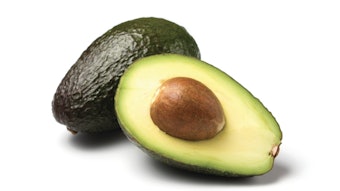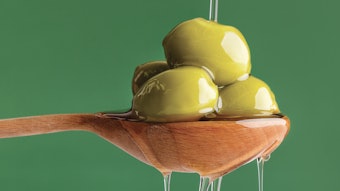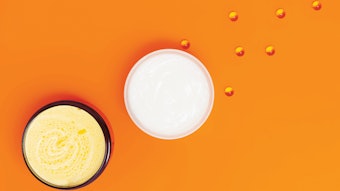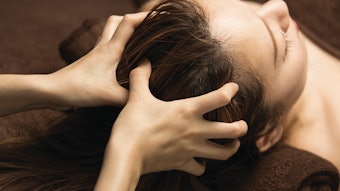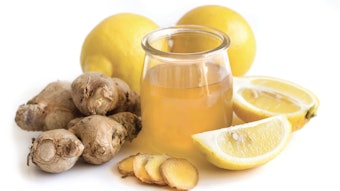
Has your skin ever felt “oily”? There’s a good reason for it! The body’s sebaceous glands, usually attached to hair follicles and located everywhere on human skin except for the palms, soles and top of the feet, produce and secrete a substance called “sebum.” A mixture of complex oils, including fatty acids and triglycerides, sebum breaks down wax buildup and naturally moisturizes and lubricates the skin’s barrier to protect it from outside elements and friction. Simply put, it keeps skin healthy!
Natural Moisturizing Factor
Maintaining skin in perfect homeostasis is essential for healthy stratum corneum hydration and optimum barrier function. Often referred to as the natural moisturizing factor, skin’s NMF is made up of natural lipids such as fatty acids, ceramides, phospholipids and triglycerides. These lipids serve to provide sources of energy to the cells, while amino acids form and maintain protein and urea to protects lipid membranes upon dehydration. When looking to create a healthy, balanced NMF and avoid the excess oil/dehydration cycle, proper cleansing and topicals can go a long way. However, when sebum is over-producing, it can make skin feel and look greasy and become a breeding ground for bacteria. The most common reasons for this excess production are hormones, diet and climate.
Hormones. Even though we don’t typically “age out” of oily skin, it is often associated with teens due primarily to hormonal imbalances. Sebaceous glands are extremely sensitive to androgens, which are hormones that contribute to growth and reproduction in both men and women. However, older skin can also experience hormonal fluctuations before menstrual cycles and pre/post-menopause, triggering an over production of sebum as well. Serums using clary oil and wild yam not only help provide hydrating, antibacterial support, but also balance oil production.
Climate. When temperatures and humidity levels rise, so can undesired facial oiliness. As heat and moisture cover the skin, we start to sweat. Not only can perspiration irritate the skin, but it also forces the pores to expand, which in turn causes sebum production to increase. This excess sebum can often lead to clogged pores and congested skin, causing issues such as blackheads, whiteheads and acne breakouts. Try using a serum containing hyaluronic acid or grape seed oil to provide needed hydration without blocking the pores and causing congestion in the skin.
Diet. What we put into our bodies also affects skin as much as the topicals we put on our bodies. If your skin is producing too much sebum, it’s worth taking a look at your diet, as certain foods can trigger excessive oil production. Here are a few of the biggest offenders to avoid.
1. Salt. Consuming too much salt can lead to water retention, swelling, baggy eyes and dehydration. Salt pulls water from skin cells to combat the high sodium level and increases oil levels to compensate for the loss of water.
2. Unhealthy Fats. Found in foods such as bacon, sausage, fried foods and foods highly processed or containing soy by-products, these contain what we call saturated or “bad” fats. These bad fats can increase inflammation in the skin to trigger excess oil to be produced. Choose healthy fats like avocados, fish, nuts and seeds.
3. Sugar. As these molecules enter the body, they increase inflammation, migrating and attaching to fat and protein cells (glycation). As a result, the body produces advanced glycation end products (AGEs), which bind to receptors in the skin, triggering a cascade of signaling pathways that leads to reduced cell function, including the ability of skin cells to retain moisture.
4. Alcohol. With natural diuretic properties, alcohol causes the body to release a toxic by-product called acetaldehyde. In an attempt to pull out this toxin, the body draws water from the skin which causes dehydration. In addition, due to alcohol’s high sugar content, it can also cause inflammation which can lead to excess oil production. Balance wine or other alcohol by drinking water.
Oily Skin and Dehydration
Oily skin and dehydration, that seems counterintuitive, right? Every function in the skin is valuable and even critical to cellular health. Sebum is extremely important, as it helps to maintain cellular structure and is filled with vital nutrients. When sebum is over-producing due to many of the reasons above, we begin to address the sebum with harsh over-stripping topicals or excessive exfoliation. The ingredients many times will break down and even eliminate sebum. Now what? What happens next is the aqueous aspect of the cell, the inner which is held together by healthy lipids (sebum), now begins to leak. This is known as transepidermal water loss (TEWL), which leads to dehydration.
As dehydration continues, the sebaceous glands become even more stimulated and accelerate in producing more sebum to compensate and protect cells. Once you stop over-stripping the epidermis, the sebum will continue to over-produce. This is due to the root cause being hormonal, diet or climate in most cases. If this hasn’t changed, the production of sebum won’t change either.
Always remember to not over-strip or over-exfoliate the skin. Many acne medications can over strip and dehydrate the skin, removing natural oils that are vital to protecting the skin’s barrier and keeping it healthy. Maintaining hydration and healthy lipids in skin cells is essential to a properly functioning barrier and overall skin health. Finding the right balance is key.
Treatments for Shine Reduction and Hydration
There are a plethora of skin care products and professional treatments that decrease sebum and buildup. Deciding what products to use at home and for professional treatments can often be overwhelming. The goal is to find products that will rid the skin of that greasy shine without over drying and completely stripping the skin of essential barrier lipids and hydration. Here are a few simple tips to keep skin balanced, hydrated AND shine-free both at home and in the treatment room.
Scrub. Add a scrub two times a week. A great way to clear excess sebum and cellular buildup without over stripping and dehydrating the skin is by adding a gentle, but clarifying treatment scrub into your cleansing routine. At home, buffing grains may be perfect support as a daily cleanse for one skin, but for another, once a week may be all that is needed. Be cautioned, however, not to over scrub the skin and follow the directions. The goal is a deep pore cleanse without over stimulating the sebaceous glands. Look for scrubs containing mandelic acid to deliver clarity and balance, dissolving desmosome junctions to gently increase cellular exfoliation and jojoba beads or poppy seeds to reduce inflammation and increase hydration.
Tone. Bump up your toners. Removing impurities and excess sebum without drying out the skin, a good toner will not only balance skin, but provide a host of other benefits as well. Look for a hydrating, yet purifying toner containing protective antioxidant support, such as EGCG and resveratrol. When sebum gets oxidized, it can alter the oxygen tension in the hair follicle, blocking the pores by creating the perfect environment for micro-aerophilic activity and P. acne bacteria.
Other beneficial ingredients to look for in your toners are salicylic acid for antiseptic and antibacterial support and lactic acid, a hydrating alpha hydroxy acid derived from milk that improves the skin’s NMF.
AHAs and other acids. Incorporate AHAs and other acids. Also look for topicals and treatments containing AHAs such as glycolic, malic, tartaric and lactic acids. Gently penetrating the skin, AHAs exfoliate dead skin cells and moisturize by signaling the cells to increase their hyaluronic acid deposition, hydrating the skin from the inside out. Other acids, such as azelaic, phytic and pyruvic acids, as well as beta acids, also deliver beneficial exfoliation, penetrating through sebum, reducing hyperkeratosis within the pores and delivering anti-inflammatory support without over stimulating the sebaceous glands.
Mask up. Incorporating a mask into your weekly home regimen or professional treatments is a great way to detox the skin and draw out impurities while moisturizing and delivering all-important nutrients, hydration and anti-inflammatory benefits. Look for masks containing kaolin, a type of clay that absorbs sebum and assists in unblocking clogged pores and bentonite, to trap and purge dead skin cells.
Ingredients To Prevent Dehydration
A clinical term used for hydrating skin care products formulated in such a way as to not block pores, non-comedogenic products can keep oily-prone skin hydrated and balanced without feeling greasy or heavy. It’s hard to believe, but even oily-prone skin needs hydration. Be sure to read the labels; look for products containing the following non-comedogenic ingredients.
Hyaluronic Acid. This naturally-occurring humectant binds 1,000 times its weight in water, increases hydration in the epidermal cells, reducing TEWL and assists in nutrient absorption.
Heavy Water. Also known as deuterium oxide, heavy water is typically taken from sea water. Containing a larger molecular structure, it retains moisture in the epidermis cells for a longer period of time than regular water.
Grape Seed Oil. Oily, acne-prone skin is often known to be deficient in linoleic acid, which leads to an increase in the stickiness of sebum. Grape seed oil, rich in naturally-occurring linoleic acid alleviates dryness in the skin while providing balance and hydration.
Epidermal Growth Factors. Plant-derived growth factors are made up of 53 amino acid proteins that stimulate the proliferation of epidermal cells and decrease inflammation in wounded or dehydrated skin. It also assists in collagen synthesis, the biosynthesis of hyaluronic acid.
Find Balance
When using scrubs, toners, AHAs and other, more aggressive formulations, remember to look at the overall formulation and add additional steps in a regimen to support balance and hydration like hyaluronic acid, heavy water, grape seed and more. Each skin is unique, changing year to year and even season to season. Finding the right skin balance between oily and dehydrated may require trying some new treatments and changing up your regimen from time to time, but the results will be clear and shine free!
Shannon Esau is the CEO and national educator at Rhonda Allison Cosmeceuticals. She brings more than 20 years experience in the esthetic industry. Esau owned skin care salons in the Dallas/Ft. Worth area, has studied chemistry in skin care formulations and has been mentored by Rhonda Allison for decades. www.RhondaAllison.com and www.REDmethod.com
